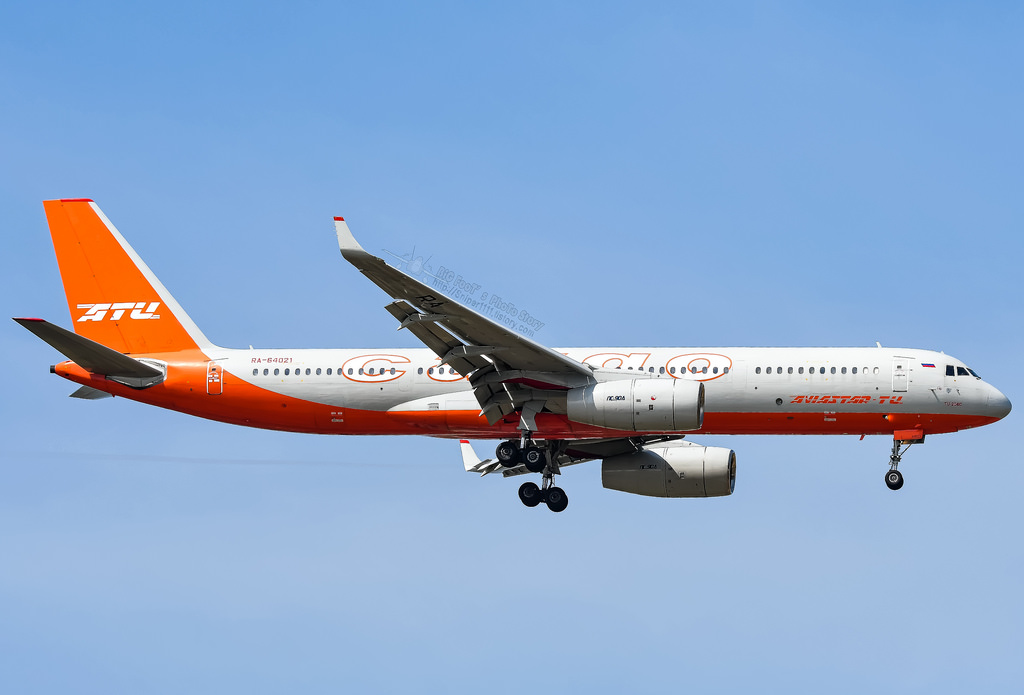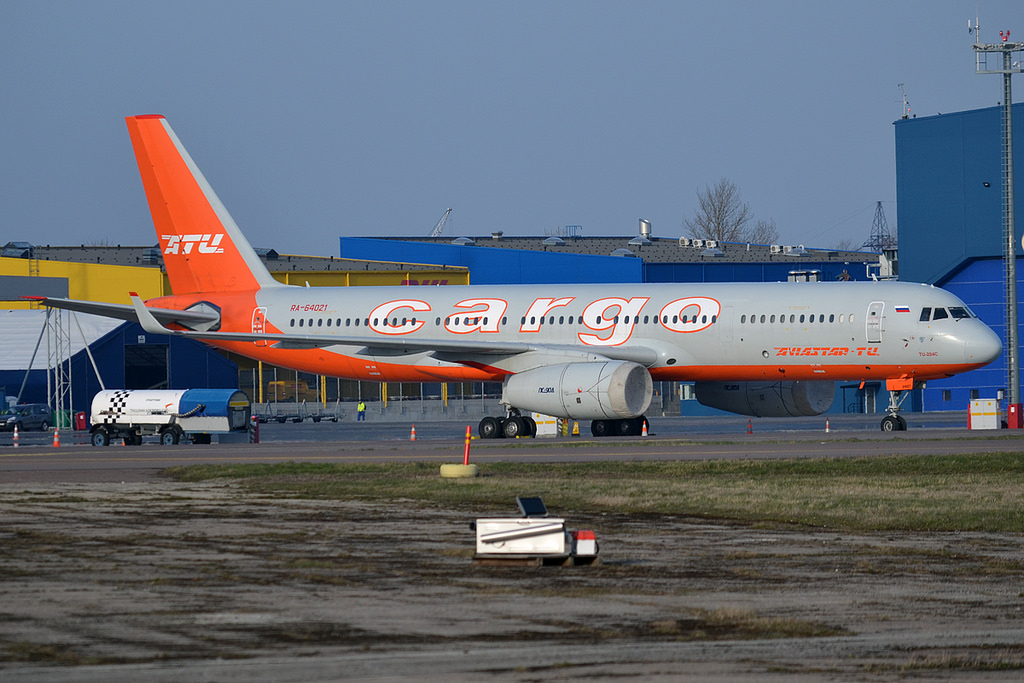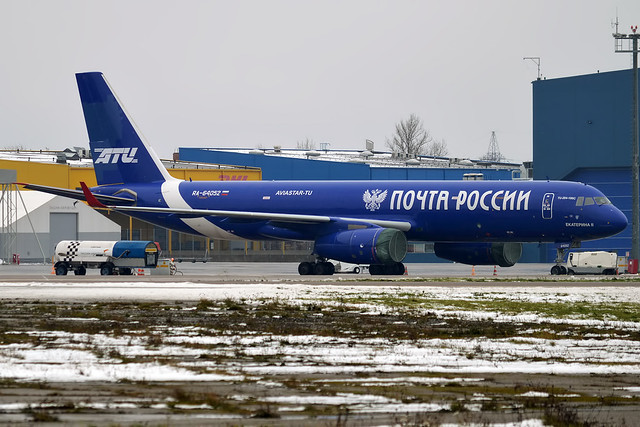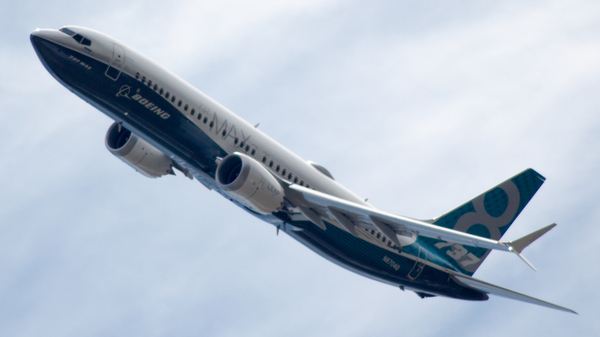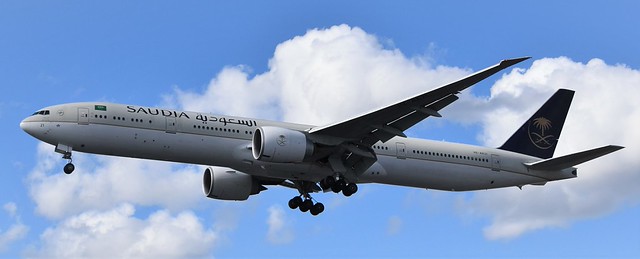Aviastar T204 at Norilsk on Aug 24th 2016, hard landing at 3G
Last Update: June 6, 2020 / 18:32:09 GMT/Zulu time
Incident Facts
Date of incident
Aug 24, 2016
Classification
Incident
Cause
Hard landing
Airline
Aviastar Russia
Departure
Moscow Vnukovo, Russia
Destination
Norilsk, Russia
Aircraft Registration
RA-64021
Aircraft Type
TUPOLEV Tu-214
ICAO Type Designator
T204
Airport
Norilsk-Alykel Airport, Norilsk
Airport ICAO Code
UOOO
The Interstate Aviation Committee (MAK) initially rated the occurrence an accident, but revised that rating to serious incident the following day. The MAK is investigating the occurrence.
Rosaviatsia reported on Aug 26th 2016 that the aircraft made a rough landing and received damage to the mounting points of the left main gear and the left engine pylon.
On Sep 15th 2016 Rosaviatsia added, that the aircraft following a first hard touchdown in adverse weather conditions (winds from 340 degrees at 10 knots, visibility 1800 meters, rain, overcast cloud base 540 meters) bounced off the runway, however, spoilers had already deployed resulting in a second touchdown at +3.05G. The aircraft taxied to the apron on own power. Besides the damage described earlier Rosaviatsia reported that the aft left hand wing spar was fractured in the area of the left hand main gear (editorial note: this information warranted a return to accident rating despite MAKs rating as serious incident after initial review).
On Jun 5th 2020 the final report in Russian only was discovered (Editorial note: to serve the purpose of global prevention of the repeat of causes leading to an occurrence an additional timely release of all occurrence reports in the only world spanning aviation language English would be necessary, a Russian only release does not achieve this purpose as set by ICAO annex 13 and just forces many aviators to waste much more time and effort each in trying to understand the circumstances leading to the occurrence. Aviators operating internationally are required to read/speak English besides their local language, investigators need to be able to read/write/speak English to communicate with their counterparts all around the globe).
The final report concludes the probable causes of the accident were:
The cause of the accident was a hard landing at +2.3G followed by a bounce to 1.8 meters height and second touchdown with a vertical acceleration of +3.056G which led to the destruction of the aircraft structure.
Contributing factors were:
- excessive speed in relation to the recommendations of the aircraft manual
- windshear at landing, the crew did not have any information regarding windshear
- lack of equipment on both aircraft and the aerodrome to detect windshear at low altitudes
- decrease in aerodynamic properties of the aircraft when flaps are being extended to takeoff or landing positions, probably due to residual deformations of the wing due to excess of operational overloads during operation
- Air/Ground signal remaining in ground position despite the bounce which resulted in the (continued) deployment of spoilers and air brakes reducing the lift by 77%
- landing with a mass close to the permitted maximum weight (according to calculations by Tupolev the maximum landing weight was exceeded)
- high pitch held by the captain during landing and incorrect bounce recovery
The aircraft carried 25,880 kg of cargo and 22,800kg of fuel for takeoff. A captain (33, ATPL, 3,481 hours total, 3,194 hours on type), a first officer (39, CPL, 3,410 hours total, 2,790 hours on type), a flight engineer (59, FEL, 9,163 hours total, 6,889 hours on type) and a senior flight operator (technical operations of aircraft and engines). The weather forecast permitted the flight, takeoff weight and center of gravity were within limits.
When the aircraft departed Vnukovo the weight on wheels switch of the left main gear did not react until 2 seconds after the left main gear had become airborne. The MAK wrote, this had occurred in three of the previous six flights, the problem existed for about a month.
Following enroute flight prior to descent into Norilsk the crew checked ATIS which indicated runway 19 was in use for landings at winds from 220 degrees between 15 and 23 knots, 4200 meters visibility and cloud ceiling at 120 meters, which were the minimums needed for landing. The crew held an approach briefing for runway 19.
During the descent updated ATIS information indicated the winds had shifted to 350 degrees, the tailwind component for an approach to runway 19 would be beyond limits, the crew therefore requested runway 01. Krasnojarsk Center coordinated with Norilsk and provided the information that visibility had gone down to 1600 meters and cloud ceiling to 100 meters, the crew accepted and continued for an approach to runway 01.
Before the aircraft was handed off to Norilsk approach ATIS information changed once again from R to W, however, the crew/first officer operating the radio did not listen to the updated ATIS information although Norilsk approach control queried whether they had checked ATIS information Whiskey (the crew had only checked Romeo). The aircraft was vectored for an approach to runway 01, while on the approach approach control provided an updated pressure information now providing QFE as 979 hectoPascals and QNH at 998 hectoPascals. The approach controller subsequently informed the crew about the current weather, winds from 340 degrees at 10 knots gusting 16 knots, visibility 1300 meters, cloud ceiling 100 meters, RVR 1300, 2900 and 4200 meters. The weather conditions were below the required weather conditions and did not permit an approach (minimum RVR of 1500 meters was required), the first officer pointed this out, however, the captain decided to continue the approach hoping by the time they would be on final approach the weather conditions would improve. The captain briefed for a possible go around.
The aircraft descended through the transition level, the captain continued the approach on standard pressure until the first officer pointed that out. The captain commented "oh! Oh! forgot!" and set the QFE 979 on his altimeter.
While maintaining 900 meters the crew was informed about 1500 meters visibility with cloud ceiling now at 180 meters, the crew radioed the weather conditions were now permissable and continued the descent to intercept the final approach. According to the load sheet the aircraft's mass at landing was 91 tons just below the permitted landing mass of 91.5 tons, Tupolev however computed the landing mass at 94 tons (above the permitted landing mass). The crew deployed the flaps to 18 degrees.
After inctercepting the final approach course the crew was handed off to tower and was cleared to land on runway 01, RVR was reported at 1500, 2800 and 4200 meters, the runway was wet with "grip 0.39". Intercepting the glidepath the crew lowered the landing gear, the flaps were set to 37 degrees.
ATIS Z became active indicating ILS runway 01 was not operative, approach lights and PAPIs runway 01 were not operative, runway 01 threshold had been displaced by 900 meters with 2580 meters landing distance available. The runway was wet, adhesion coefficient 0.39, winds at ground from 350 degrees between 8 and 16 knots, QFE 979, QNH 993, 700 meters visibility due to fog, vertical visibility 60 meters.
The captain performed the approach manually with the first officer being in control of the engines and instrument speed (combined control). The aircraft descended through 160 meters at about 800fpm and 142 KIAS about 3km before the runway threshold, when the autopilot and autothrust were disengaged. The captain did not maintain the vertical profile as provided in the NOTAMs but continued the descent about 35 meters below the revised profile.
The aircraft crossed the (non-displaced) threshold of runway 01 at 25 meters/80 feet AGL, maintained 12 meters/40 feet AGL and crossed the displaced threshold at that height.
Tupolev computed the aircraft was under the influence of moderate windshear below 60 meters AGL with winds varying from 3 meters/s (6 knots) head and 3 meters/s (6 knots) tailwind. At a height of 18 meters the aircraft hit 3 knots headwind which practically caused the aircraft to level off at 12 meters AGL. The captain subsequently provided nose down inputs, the aircraft settled in a descent of 300-400 fpm. Descending between 8 and 6 meters AGL the headwind reduced from 6 knots to 2 knots with a downdraft component of 0.7m/s (140 fpm) leading to an excessive rate of descent, the captain reacted by increasing the pitch to about 5-6 degrees nose up, which was not sufficient to arrest the descent.
The aircraft touched down at 850fpm and +2.3G at 138 KIAS.
The MAK analysed the landing at the increased vertical rate probably occurred due to the reduction of the wings' load bearing properties due to an underestimated lift coefficient with the flaps in landing configuration. Analysis of the previous flights already showed about 15-20% reduction compared to the aircraft type's specifications. The aircraft had been involved in a +2.17G landing in 2010. It is probable that this caused residual deformation of the aircraft structure. Following that event the aircraft had been checked by Tupolev, no structural integrity violations were detected and the aircraft was returned to service with the agreement by the Civil Aviation Authority.
The touchdown at 138 KIAS was at about 10 knots faster than recommended by the flight manual. This additional kinetic energy caused the aircraft to separate from the runway again and reach a height of 1.8 meters. At the same time the thrust levers were moved to the idle position, which caused the speedbrakes and airbrakes to deploy. Despite the bounce the weight on wheel signal (generated from the compression of the shock absorber) partially remained active, which caused the speed brakes and air brakes to deploy, which caused a loss of lift. The aircraft touched down a second time, about 2.5 seconds after the first touchdown, at +3.056G with a left bank of 2.5 degrees.
The MAK analysed the release of spoilers and air brakes is unacceptable in the absence of wheel contact with the runway. The left bank during the second touch down led to an excess of permitted impact energy of the left main gear strut by 83% and caused the structural damage, the right main gear did not exceed its structural limits.
The aircraft sustained substantial structural damage including left wing spar #2.
Metars:
UOOO 240600Z 35004MPS 7000 -SHRA BKN007CB 06/06 Q0998 R01/29//39 TEMPO 0700 FG VV002 RMK QFE733
UOOO 240530Z 36006MPS 4000 -SHRA BR BKN014CB OVC031 06/06 Q0998 R01/29//39 TEMPO 0700 FG VV002 RMK QFE733
UOOO 240500Z 01005MPS 5000 2400SW -SHRA BR BKN011CB 07/06 Q0998 R01/29//39 TEMPO 0700 FG VV002 RMK QFE733
UOOO 240430Z 34005MPS 3900 1600SW R01/1800 -SHRA BR OVC018CB 07/07 Q0998 R01/29//39 TEMPO 0700 FG VV002 RMK QFE734
UOOO 240400Z 01006MPS 2800 -SHRA BR OVC007CB 08/08 Q0998 R19/29//45 TEMPO 0700 FG VV002 RMK QFE733
UOOO 240330Z 22008G12MPS 3800 -SHRA BR BKN004CB 08/08 Q0998 R19/29//45 TEMPO 0700 FG VV002 RMK QBB120 QFE733
UOOO 240300Z 22009G12MPS 4600 -SHRA BR BKN004CB 08/08 Q0999 R19/29//45 TEMPO 0700 FG VV002 RMK QBB120 QFE734
UOOO 240230Z 22010G13MPS 4000 -SHRA BR BKN004CB 08/08 Q1000 R19/29//45 TEMPO 0700 FG VV002 RMK QBB120 QFE734
UOOO 240200Z 21008MPS 3500 -SHRA BR BKN004CB 07/07 Q1001 R19/29//45 TEMPO 0700 FG VV002 RMK QBB120 QFE735
UOOO 240130Z 22007MPS 1900 R19/P2000 -SHRA BR BKN004CB 07/07 Q1002 R19/29//48 TEMPO 0700 FG VV002 RMK QBB120 QFE736
UOOO 240100Z 23007G10MPS 5000 -SHRA BR BKN004CB 08/08 Q1003 R19/29//48 TEMPO 0700 FG VV002 RMK QBB120 QFE737
UOOO 240030Z 24008MPS 5000 -SHRA BR BKN005CB 08/08 Q1003 R19/29//50 TEMPO 0700 FG VV002 RMK QFE737
UOOO 240000Z 24008MPS 4200 BR BKN007CB 07/07 Q1005 R19/29//50 TEMPO 0700 FG VV002 RMK QFE738
Aircraft Registration Data
Incident Facts
Date of incident
Aug 24, 2016
Classification
Incident
Cause
Hard landing
Airline
Aviastar Russia
Departure
Moscow Vnukovo, Russia
Destination
Norilsk, Russia
Aircraft Registration
RA-64021
Aircraft Type
TUPOLEV Tu-214
ICAO Type Designator
T204
Airport
Norilsk-Alykel Airport, Norilsk
Airport ICAO Code
UOOO
This article is published under license from Avherald.com. © of text by Avherald.com.
Article source
You can read 2 more free articles without a subscription.
Subscribe now and continue reading without any limits!
Read unlimited articles and receive our daily update briefing. Gain better insights into what is happening in commercial aviation safety.
Send tip
Support AeroInside by sending a small tip amount.
Related articles
Aviastar T204 at Moscow on Dec 25th 2020, autopilot failure forces diversion
An Aviastar Tupolev TU-204 on behalf of DHL, registration RA-64024 performing freight flight 4B-952 from Leipzig (Germany) to Moscow Sheremetyevo…
Aviastar T204 at Krasnojarsk on May 12th 2020, could not retract landing gear
An Aviastar Russia Tupolev TU-204, registration RA-64052 performing freight flight 4B-9623 from Krasnojarsk to Norilsk (Russia) with 4 crew, was…
Aviastar DHC6 near Makassar on Oct 2nd 2015, aircraft collided with terrain
On Jan 4th 2017 the NTSC released their final report concluding the probable cause of the crash was:Deviation from the company visual route without…
Newest articles
Tway B38M enroute on Jan 10th 2026, power bank thermal runaway, 8 injuries
A Tway Air Boeing 737-8 MAX, registration HL8579 performing flight TW-634 from Sanya (China) to Cheongju (South Korea) with 32 passengers and 6 crew,…
Saudia B773 at Islamabad on Oct 14th 2024, landed on wrong runway
A Saudi Arabian Airlines Boeing 777-300, registration HZ-AK21 performing flight SV-724 from Riyadh (Saudi Arabia) to Islamabad (Pakistan) with 399…
Subscribe today
Are you researching aviation incidents? Get access to AeroInside Insights, unlimited read access and receive the daily newsletter.
Pick your plan and subscribePartner

ELITE Simulation Solutions is a leading global provider of Flight Simulation Training Devices, IFR training software as well as flight controls and related services. Find out more.
SafetyScan Pro provides streamlined access to thousands of aviation accident reports. Tailored for your safety management efforts. Book your demo today
AeroInside Blog
Popular aircraft
Airbus A320Boeing 737-800
Boeing 737-800 MAX
Popular airlines
American AirlinesUnited
Delta
Air Canada
Lufthansa
British Airways

